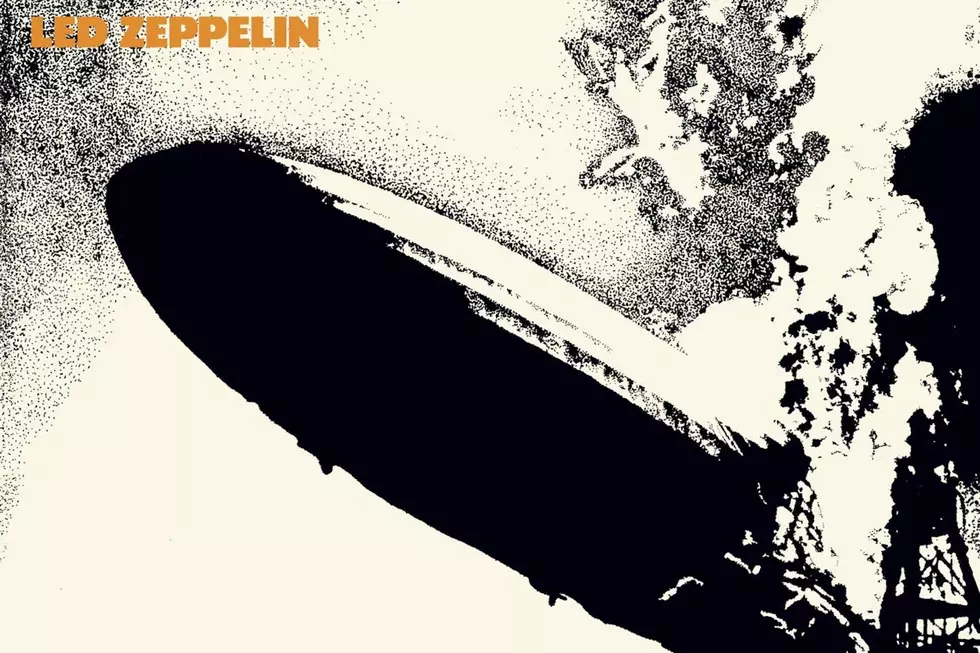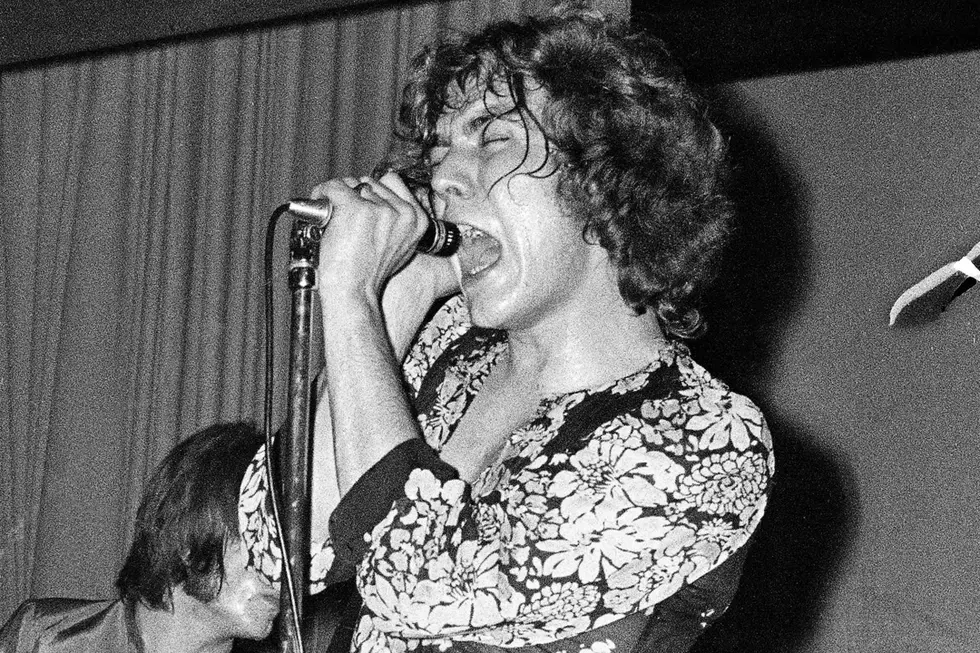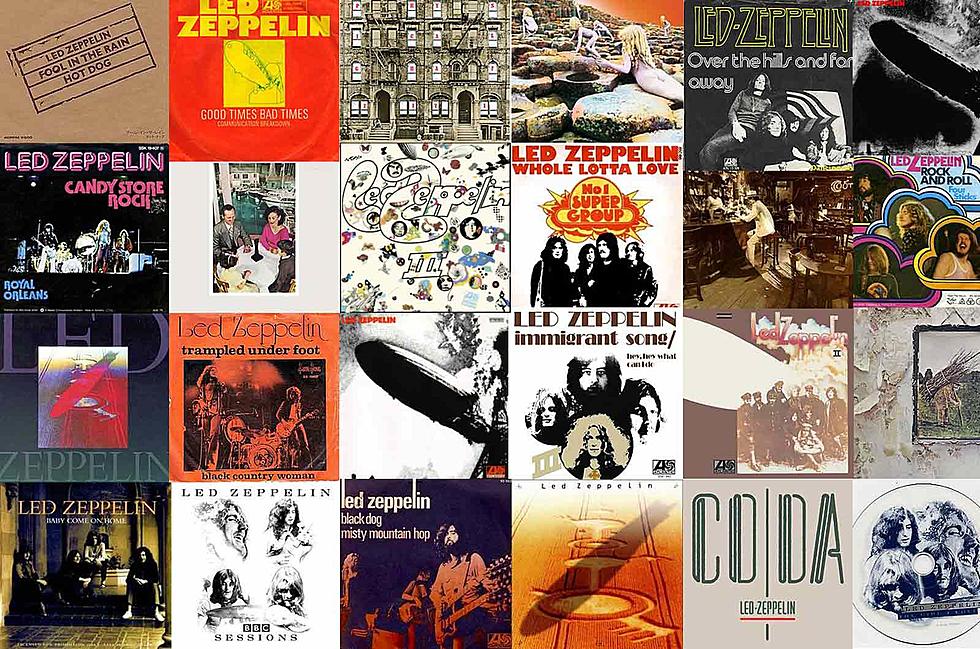
How Led Zeppelin Recorded ‘Physical Graffiti’
Author Paul Rees' 2013 biography Robert Plant: A Life revealed some fascinating insights into the group's singer while tracing his life from childhood through highlights of his more recent solo career. The excerpt below captures Led Zeppelin at the height of their collective creative powers during sessions for the double-album masterpiece Physical Graffiti, which arrived on Feb. 24, 1975. It was also a time when fame, addictions and interpersonal disputes were starting to leave the band a bit frayed around the edges.
Neither the setting up of (record label) Swan Song nor the chaotic production of their film distracted Led Zeppelin from the business of making their next record. In the spring of 1974 they retired for a third time to Headley Grange. [Jimmy] Page retained a room in the freezing house but the others chose to be sequestered nearby at a plush country hotel. Not coincidentally, the mobile studio parked on the lawn on this occasion belonged to Ronnie Lane of the Faces - a cheaper alternative to the Rolling Stones’ studio they had previously used.
During the creative boom of the last four years enough songs for two records had been stockpiled and they elected to use them all. Since the band were now filled with a sense of their own importance, this much was inevitable. The double album was then perceived as being a defining artistic statement, one that had already been made by the Beatles’ White Album, the Rolling Stones’ Exile on Main Street, Bob Dylan’s Blonde on Blonde and, just the previous year, the Who on Quadrophenia. Of course, Zeppelin would have to join the pantheon.
They worked fast, cutting the majority of the songs in one or two takes. 15 tracks in all, eight dating as far back as the spring of 1970 and the rest written in recent months. Sound engineer Benji LeFevre was present throughout the sessions. “There were moments of musical genius,” he says. “As a unit it was like … Phew! There was the most amazing bond, certainly when I began working with them.
“Yet there were also times when it all stuttered to a halt. We took farm animals up to the first floor and let off flares. Complete madness. Everything stopped for several weeks when one of the roadies, Peppy, drove Bonzo’s new car — a BMW 3.0 CSl — into a wall. Bonzo was so upset about his pride and joy that he wanted to kill Peppy, who hid in a wardrobe for 36 hours.
“It was just young blokes having a laugh. The band had this belief about them then that they were untouchable — as we all do. It was all to do with testosterone and, believe me, Robert had more it it than anybody I’ve ever known.”
Still, at the edges, the fraying continued. One morning Bonham arrived at the Grange with a big bag containing 1,500 pills of the sedative Mandrax, intending to conceal them from the rest of the band by taping them to the inside of his drum heads. A member of the crew spotted the flaw in his plan, pointing out to Bonham that he had a Perspex kit.
“Like most drummers, Bonzo tended to exceed the limit more than most people would,” says LeFevre. “Sometimes he was particularly cruel to Mick Hinton — his roadie. Bonzo would punch him in the face for no reason at all.
“With Robert and Bonzo, they were so tight you couldn’t slip a piece of toilet paper between them. But Robert wasn’t afraid to go out into the world and be himself.” He’d buy a few people a drink in the pub. Whereas Bonzo would go into a pub and announce that he was going to buy everybody drinks all afternoon. Why? Insecurity probably. “As with any group of friends, the dynamic between each of them ebbed and flowed. The relationships changed depending on the circumstances, of which there were some heavy ones. And also, I imagine, with the amount of mind-altering substances being consumed. Because then paranoia starts to evolve.”
Listen to Led Zeppelin Perform 'Kashmir'
For now, hover, none of these external forces diminished the music. The completed album, Physical Graffiti, was the second — and last — stone-cold classic Zeppelin would make. Its fifteen tracks ran to more than eighty minutes and sprawled out across four sides of vinyl, but none of this expanse was wasted. Rather, it allowed for the setting loose of Zeppelin’s most intricate and varied collection of songs, plunging through rumbling rockers like "Custard Pie" and "Night Flight" and into gradually unwinding epics such as "Ten Years Gone" and "In the Light," the latter’s spiraling drone stolen from the baked streets of Makkrakech. Something as decorative as "Bron-Yr-Aur" or reflective as "Down by the Seaside" was set alongside the primitive crunch of "The Wanton Song."
Appropriately, it all sounded enormous. Conducting the orchestra through all its tremors and earthquakes, Page reached his apogee as a producer. He mixed the songs into a great rhythmic soup, basing it on Bonham’s reverberations — his drums again recorded in the Grange’s vast entrance hall — and layered multiple guitar tracks on top of these.
There was a manic zeal to the whole enterprise, through. "Trampled Under Foot" cut a thrilling dash, Jones taking the inspiration for his bubbling clavinet line from Stevie Wonder. "In My Time of Dying" was unrecognizable from the original blues song from which it was appropriated, Blind Willie Johnson’s "Jesus, Make Up My Dying Bed" from 1927. Huge and unbending, the Zeppelin track powered along for more than eleven minutes, Page’s bottleneck guitar ricocheting off Bonham’s tumultuous fills.
Then there was the song that is perhaps their grandest achievement, "Kashmir." Page’s majestic, circling riff cast it out across a cool desert night and into Jones and Bonham’s driving rhythm, and on through all the mysteries and wonders of Plant’s incantations. It did not matter that Kasmir itself is, in fact, a wet mountainous region or that neither Plant nor Page had ever been there — it was the song that best captured the spirit of their wanderings.
On "Sick Again" Plant looked back with a jaded eye at the tawdry scene he had last encountered on Sunset Strip, perhaps referring to Lori Maddox, Page’s teenage consort, in the line “One day soon you’re gonna reach sixteen.” Yet "Black Country Woman" gave rise to more lasting examination, as Plant, in the best blues tradition, beseeched his woman not to treat him mean, before concluding, “That’s alright, I know your sisters, too.” Here was further fertile ground upon which to grow speculation about the state of relations between Plant and his wife’s younger sister, although if this were at the song’s root it suggested that Maureen Plant never listened to her husband’s records.
Physical Graffiti was released on Feb. 24, 1975, in a die-cut sleeve that pictured a New York City brownstone tenement block, through the windows of which one could pick out Elizabeth Taylor, Lee Harvey Oswald and the band themselves dressed in drag. There were other big, ambitious records that year, Bob Dylan’s Blood on the Tracks, Bruce Springsteen’s Born to Run and Fleetwood Mac among them, but this, the artwork alone seemed to insist, was the greatest and most imposing of all. So it proved, shipping more than a million copies and becoming the fastest-selling record in history. For now, at least, there was still no stopping them.
From 'Robert Plant: A Life' by Paul Rees. Reprinted by permission.
Led Zeppelin Albums Ranked
More From Ultimate Classic Rock









